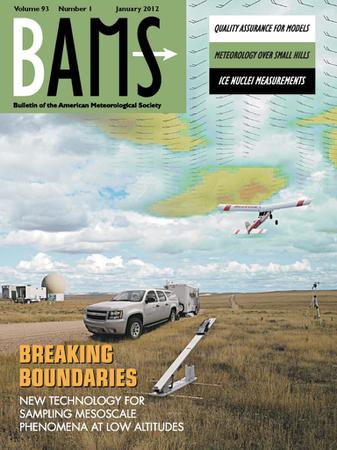Seeding of supercooled low stratus clouds with a UAV to study microphysical ice processes - An introduction to the CLOUDLAB project
IF 5.9
1区 地球科学
Q1 METEOROLOGY & ATMOSPHERIC SCIENCES
引用次数: 1
Abstract
Abstract Ice formation and growth processes play a crucial role in the evolution of cloud systems and the formation of precipitation. However, the initial formation and growth of ice crystals are challenging to study in the real atmosphere resulting in uncertainties in weather forecasts and climate projections. The CLOUDLAB project tackles this problem by using supercooled stratus clouds as a natural laboratory for targeted glaciogenic cloud seeding to advance the understanding of ice processes: Ice nucleating particles are injected from an uncrewed aerial vehicle (UAV) into supercooled stratus clouds to induce ice crystal formation and subsequent growth processes. Microphysical changes induced by seeding are measured 3–15 min downstream of the seeding location using in situ and ground-based remote sensing instrumentation. The novel application of seeding with a multirotor UAV combined with the persistent nature of stratus clouds enables repeated seeding experiments under similar and well-constrained initial conditions. This article describes the scientific goals, experimental design, and first results of CLOUDLAB. First, the seeding plume is characterized by using measurements of a UAV equipped with an optical particle counter. Second, the seeding-induced microphysical changes observed by cloud radars and a tethered balloon system are presented. The seeding signatures were detected by regions of increased radar reflectivity (>−20 dB Z ), which were 10–20 dB Z higher than the natural background. Simultaneously, high concentrations of seeding particles and ice crystals (up to 2,000 L −1 ) were observed. A cloud seeding case was simulated with the numerical weather model ICON to contextualize the findings.用无人机播种过冷低层云,研究冰的微物理过程——CLOUDLAB项目简介
冰的形成和生长过程对云系统的演化和降水的形成起着至关重要的作用。然而,在真实大气中研究冰晶的初始形成和生长具有挑战性,导致天气预报和气候预估存在不确定性。CLOUDLAB项目通过使用过冷层云作为有针对性的冰川生成云播种的自然实验室来解决这个问题,以推进对冰过程的理解:从无人驾驶飞行器(UAV)将冰核粒子注入过冷层云,以诱导冰晶形成和随后的生长过程。利用原位和地面遥感仪器在播种位置下游3-15分钟处测量播种引起的微物理变化。多旋翼无人机的播种新应用与层云的持久性相结合,可以在相似和良好约束的初始条件下重复播种实验。本文描述了CLOUDLAB的科学目标、实验设计和初步结果。首先,利用配备光学粒子计数器的无人机测量来表征播种羽流。其次,介绍了云雷达和系留气球系统观测到的种子引起的微物理变化。在雷达反射率增加的区域(>−20 dB Z)检测到播种特征,该区域比自然背景高10-20 dB Z。同时,观测到高浓度的种子颗粒和冰晶(高达2000 L−1)。用数值天气模式ICON模拟了一种云播情况,以说明研究结果。
本文章由计算机程序翻译,如有差异,请以英文原文为准。
求助全文
约1分钟内获得全文
求助全文
来源期刊
CiteScore
9.80
自引率
6.20%
发文量
231
审稿时长
6-12 weeks
期刊介绍:
The Bulletin of the American Meteorological Society (BAMS) is the flagship magazine of AMS and publishes articles of interest and significance for the weather, water, and climate community as well as news, editorials, and reviews for AMS members.

 求助内容:
求助内容: 应助结果提醒方式:
应助结果提醒方式:


